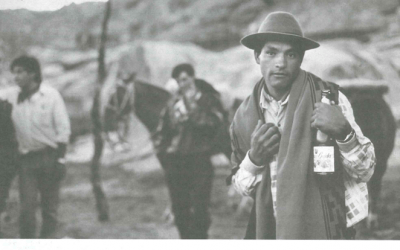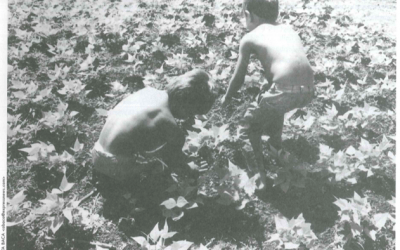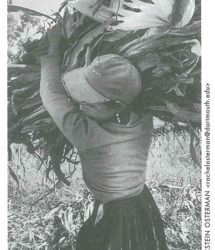Shepherds at the End of the Millennium
Inequality in the Argentine Countryside
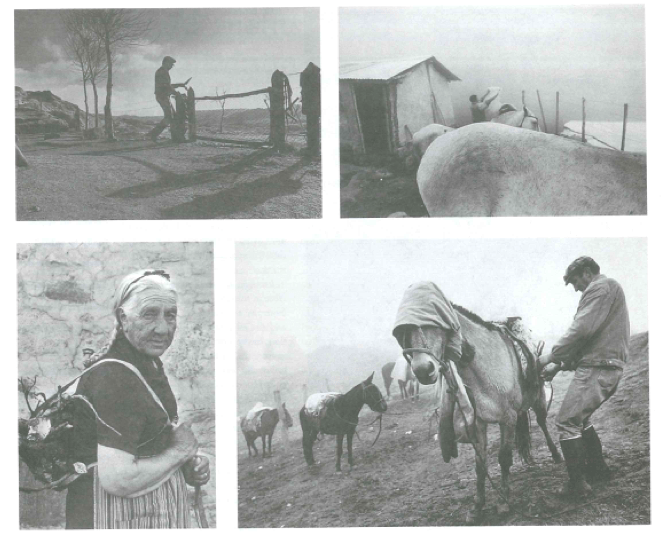
Shepherds at the End of the Millennium” is an examination of marginal and forgotten Argentines. Argentina is marked by a distorted development that favors the great urban centers- especially Buenos Aires- and restricts growth in the country.
Changes in the world economy have resulted in even more inequality in the countryside. There is a lack of funding for programs to enable the development of an integrated nation. Until fundamental political changes occur, we can continue to say that an isolated community that has not grown yet will not grow. The isolated communities of Argentina are victims of this fate.
The highlands of Pampa de Achala are in the province of Córdoba. There, a traditional community is moored. It exists in utter isolation. There are no roads, no electricity, no telephones. This community survives on a simple economy based on herding goats and sheep.
The residents live scattered in the mountain, attached to that place where they were born and have buried their dead. In spite of the distance they have a strong sense of community which is reflected in celebrations such as Easter or the day of the patron saint. Until recently, and in spite of the scarcity of means they have lived in social harmony with the environment facing their only predator: the puma.
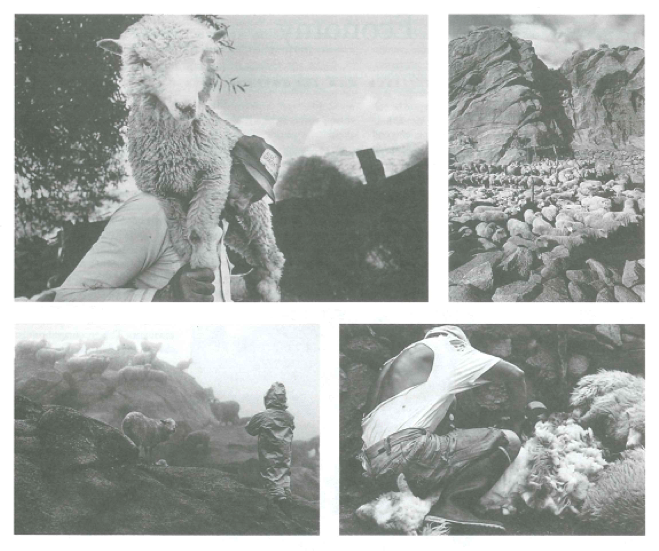
My background, formation and experience, linked closely with the world of aesthetics, with nature and the social problems, drew me to this place. I was captivated by fascination and awe. At first there was a certain magic about the weather and landscape, the fog taking over the land and reducing the vast space to a setting filled with isolated objects and ghostly characters. I was moved by those people living in that inaccessible wilderness, so isolated, so concerned in their relationship with nature: such stubbornness and effort to remain there. These same people transforming the landscape, gutted animals or recently dead, hanging like fruits from the trees. Then, I discovered a ‘non-urban’ relationship with nature and death, sometimes almost scrawny and brutal.
My photographic work is born of this estrangement before a landscape which presents itself as ambiguous; magic and beautiful and at the same time harsh and rigorous; of my unease before people living in so demanding a landscape, whose lives are so entrenched in the exigencies of nature.
Fall 1999
Cristina Fraire, an Argentine photographer, began her career as a photojournalist. Entranced and compelled by the life in Pampa de Achala, she now devotes her energies to photographing the community with grants from the the John Simon Guggenheim Foundation and Argentinas Fondo Nacional de las Artes (National Fund for the Arts). Her most recent exhibition was at a group showing of ten Argentine photographers at the Institute of Contemporary Photograply in New York. Her photographs are included in the collection of the Bibliotheque Nationale de France, in the Museum of Fine Arts of Houston, USA, and in the books La FotoGalería, and Fotografía Argentina Actual Dos, both published by the photographic publisher La Azotea, and other publications. She can be reached at «cristina fraire@ciudad.com.ar>.
Related Articles
Its Strengths, Problems, and Future
Latin America can take a punch. Its endurance of a whole series of rather large shocks in the last two years is a tribute to the region’s extensive structural reforms. The consequences a decade…
Health and Wealth
The difficulties of operating in a tropical environment were already abundantly clear during the building of the Panama Canal more than a hundred years ago. “The effect of the climate on tools…
Economic Insecurity in Latin America
A 23-year old Brazilian woman was among 10,000 job applicants seeking a desk job at Banco do Brazil. When asked why she was seeking employment that actually paid less than her present…

